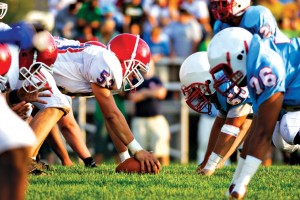Peaking for Competition with Periodized Training
 On competition day athletes need to be at their peak to maximize their performance. Done correctly under the supervision of a qualified sports performance specialist or athletic trainer, a periodized training program can ensure superior physical and psychological readiness during competition.
On competition day athletes need to be at their peak to maximize their performance. Done correctly under the supervision of a qualified sports performance specialist or athletic trainer, a periodized training program can ensure superior physical and psychological readiness during competition.
Periodized training develops an athlete’s strength and skill through a series of phases to ensure that they perform at their peak during specific competitions. When drafting a periodized program, sports performance specialists determine how an athlete’s training should progress throughout the year. From there, a trainer divides the annual training into five defined phases:
- General preparation
- Sports-specific training
- Pre-competition training
- Competition training
- Transition training
Aki Hiyama, a physical therapist and sports certified specialist at In Motion’s Healthy Way clinic in Virginia Beach, is an expert on periodized training. According to Hiyama, all training should begin with general preparation. “Studies have shown that athletes who develop fundamental endurance and strength are more likely to maintain their power throughout a season,” he says, “this general preparation phase also allows athletes to focus on injury prevention training to protect their bodies during later phases.”
Once a solid physical foundation is developed, athletes focus on building athletic skills or strength in the specific preparation phase. This training emphasizes sports-specific drills, efficient movement evaluation, and the development of advanced technical skills. During the pre-competition phase, trainers assess the athlete’s preparedness and increase the percentage of sports-specific training to approximately 90% of all sessions.
As the main competition approaches, athletes decrease their training time and increase their training intensity during the competition phase. Hiyama manipulates the training volume and intensity of his athletes to ensure that their training peaks two to three weeks before the main competition, with tapering beginning 8-14 days before the competition.
Often overlooked, the final transition phase is used to facilitate recovery from a season of strenuous wear and tear on the body. Athletes tend to forget the importance of rest and recovery as a part of active training. Hiyama warns that forgoing a recovery period could impact future training: “The transition phase of a periodized program helps to prepare the athletes for the next training cycle. Starting a new preparatory phase too soon could impair an athletes’ performance in future competitive cycle and increase their risk for injury.”
+ Learn more about In Motion’s Sports Performance programs.
+ Find an In Motion Sports Performance clinic near you!

